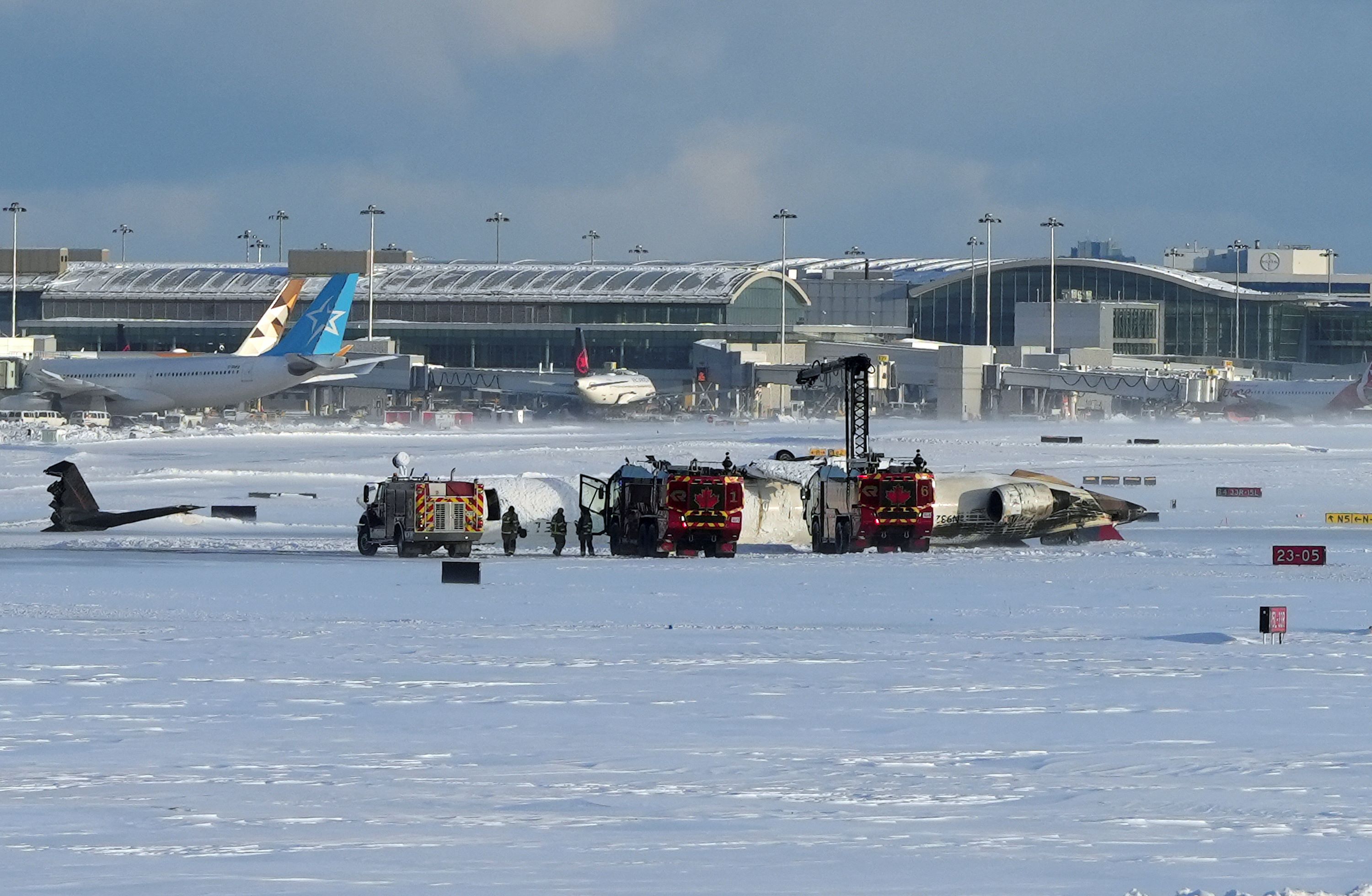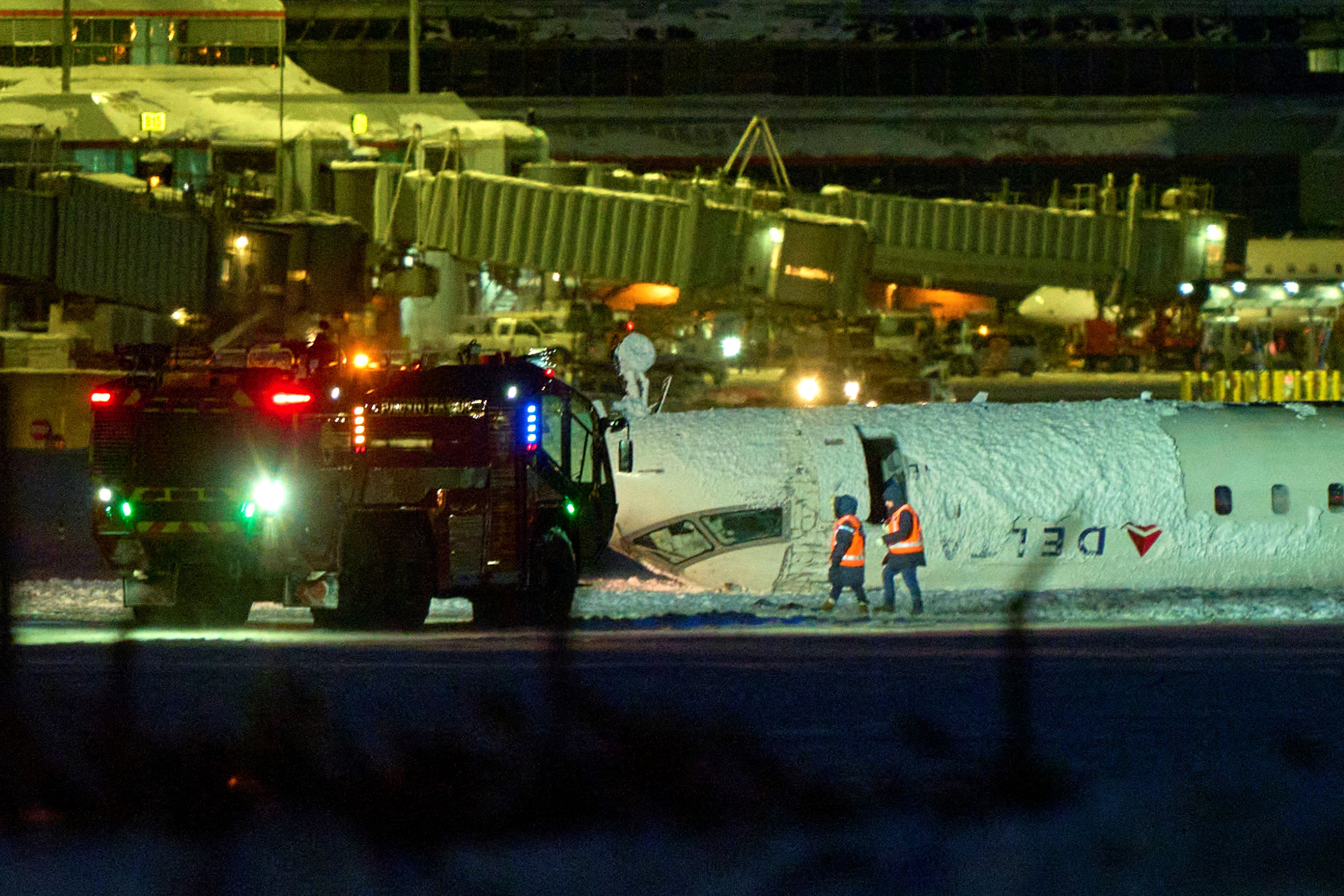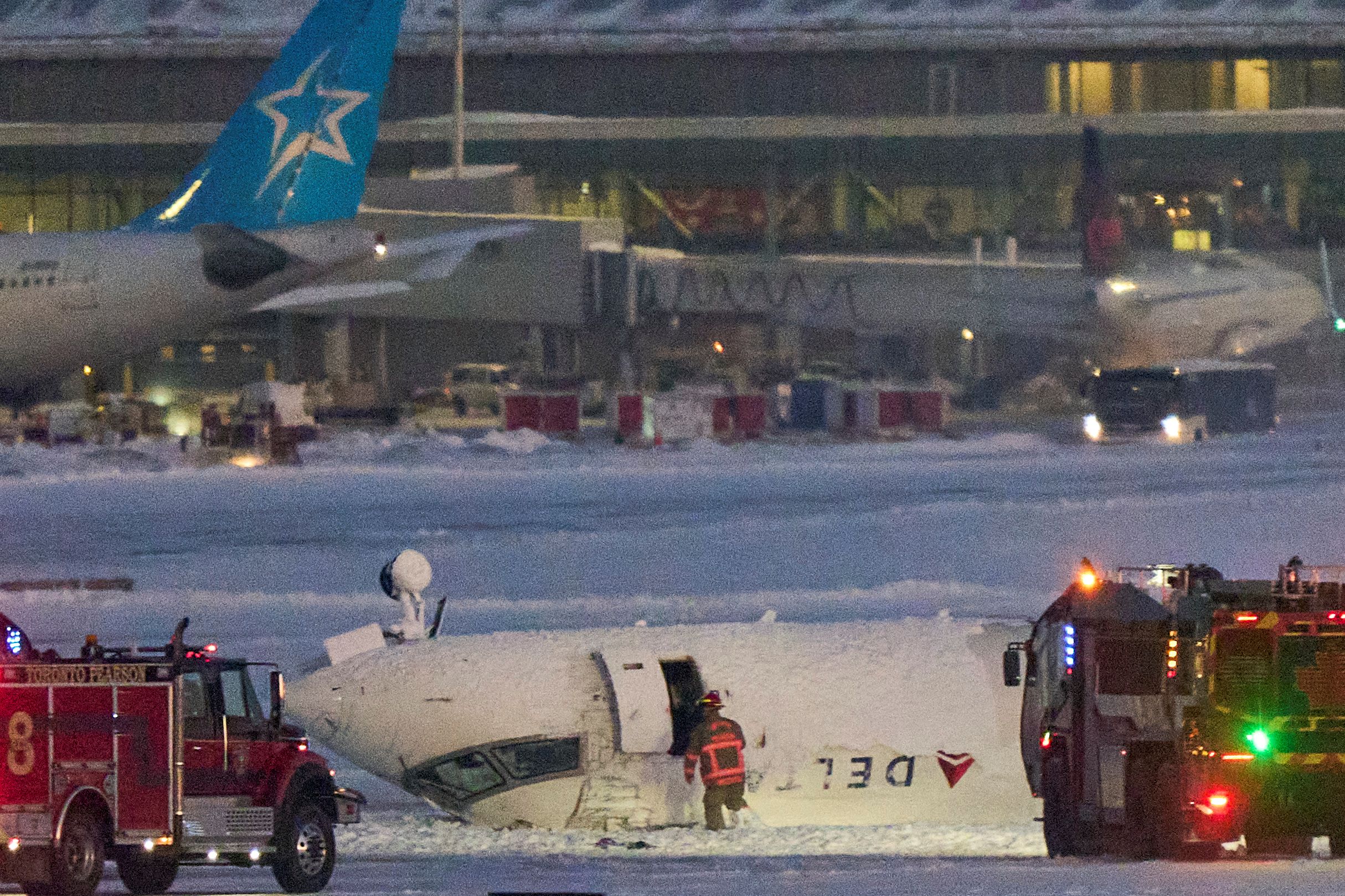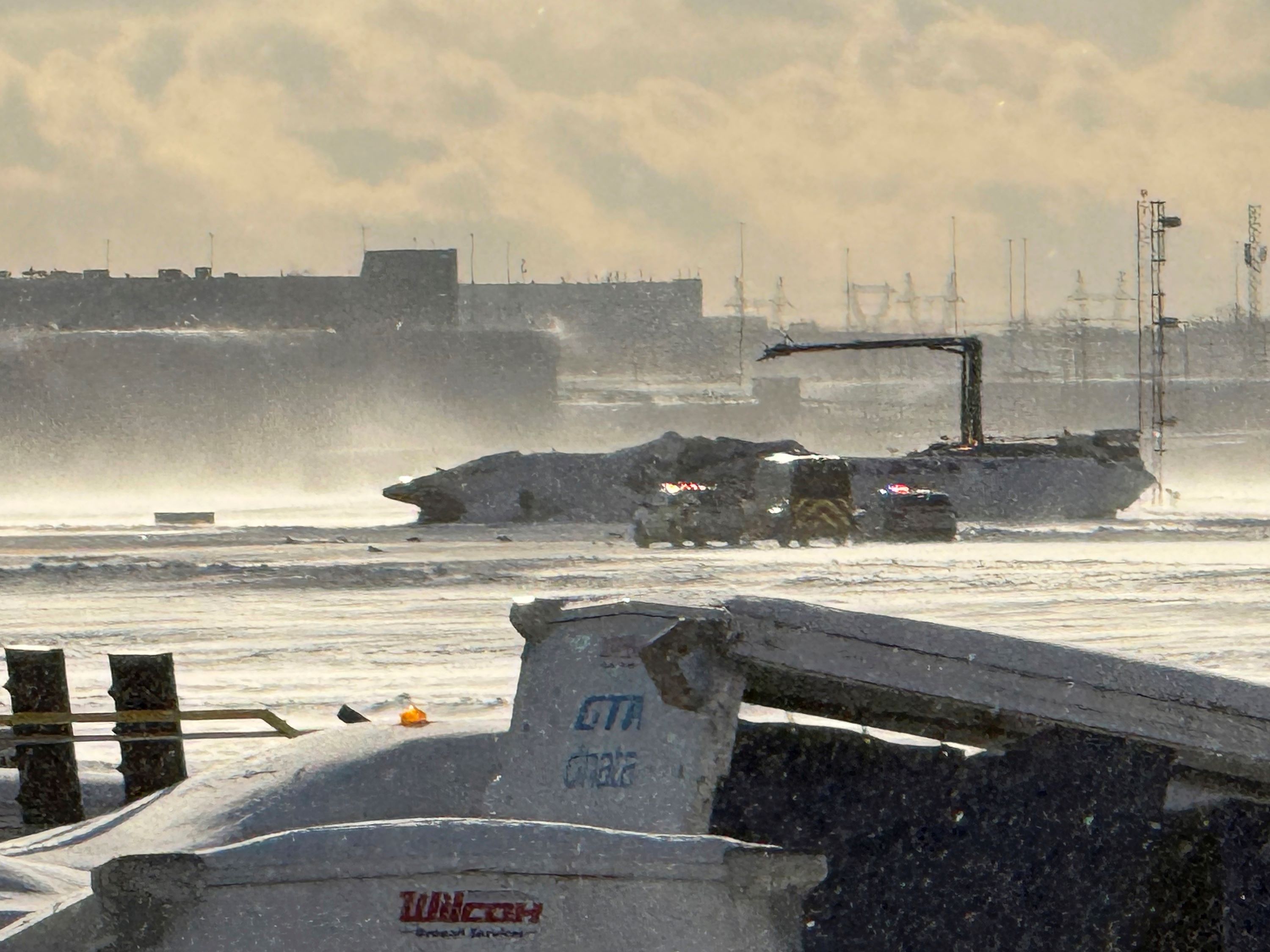
TORONTO - A Delta Air Lines regional jet flipped upside down upon landing at Canada's Toronto Pearson Airport on Monday amid windy weather following a snowstorm, injuring 18 of the 80 people on board, officials said.
Three people on the flight that originated at Minneapolis-St. Paul International Airport suffered critical injuries, among them a child, a Canadian air ambulance official added, with 15 others also immediately taken to hospitals.
READ MORE: South Korea to limit power banks on flights following plane fire
US carrier Delta said a CRJ900 aircraft operated by its Endeavor Air subsidiary was involved in a single-aircraft accident with 76 passengers and four crew members on board.
The 16-year-old CRJ900, made by Canada's Bombardier and powered by GE Aerospace engines, can seat up to 90 people. At least one of the two wings was no longer attached to the plane, video showed after the accident.
Canadian authorities said they would investigate the cause of the crash, which was not yet known.

Passenger John Nelson posted a video of the aftermath on Facebook, showing a fire engine spraying water on the plane that was lying belly-up on the snow-covered tarmac.
He later told CNN there was no indication of anything unusual before landing.
"We hit the ground, and we were sideways, and then we were upside down," Nelson told the television network.
ALSO READ: Coast Guard finds wreckage of missing Alaska plane; all 10 on board killed
"I was able to just unbuckle and sort of fall and push myself to the ground. And then some people were kind of hanging and needed some help being helped down, and others were able to get down on their own," he said.
Weather conditions
Pearson Airport said earlier on Monday it was dealing with high winds and frigid temperatures as airlines attempted to catch up with missed flights after a weekend snowstorm dumped more than 22 cm of snow at the airport.
The Delta plane touched down in Toronto at 2:13 pm (1913 GMT) after an 86-minute flight and came to rest near the intersection of runway 23 and runway 15, FlightRadar24 data showed.
ALSO READ: 4 killed in plane crash in southern Philippines
The reported weather conditions at time of the crash indicated a "gusting crosswind and blowing snow," the flight tracking website said.
Toronto Pearson Fire Chief Todd Aitken said late on Monday the runway was dry and there were no crosswind conditions, but several pilots Reuters spoke to who had seen videos of the incident pushed back against this comment.

US aviation safety expert and pilot John Cox said there was an average crosswind of 19 knots from the right as it was landing, but he noted this was an average, and gusts would go up and down.
"It's gusty so they are constantly going to have to be making adjustments in the air speed, adjustments in the vertical profile and adjustments in the lateral profile," he said of the pilots, adding that "it's normal for what professional pilots do".
Investigators would try to figure out why the right wing separated from the plane, Cox said.
ALSO READ: S. Korea wants to rebuild aviation safety system after crash, fire incidents
Michael J. McCormick, associate professor of air traffic management at Embry-Riddle Aeronautical University, said the upside-down position made the Toronto crash fairly unique.
"But the fact that 80 people survived an event like this is a testament to the engineering and the technology, the regulatory background that would go into creating a system where somebody can actually survive something that not too long ago would have been fatal," he said.

Three previous cases of planes flipping over on landing involved McDonnell-Douglas's MD-11 model. In 2009, a FedEx freighter turned over on landing at Tokyo's Narita airport killing both pilots. In 1997, another FedEx freighter flipped over at Newark with no fatalities.
Airport delays
Deborah Flint, president of the Toronto airport, said on Monday evening there would be some operational impact and delays at the airport over the next few days while two runways remained closed for the investigation.
She attributed the absence of fatalities in part to the work of first responders at the airport.
"We are very grateful that there is no loss of life and relatively minor injuries," she said at a press conference.
READ MORE: Japan Airlines jet wing strikes Delta Air plane on ground in Seattle
The Transportation Safety Board of Canada (TSB) said it was deploying a team of investigators, and the US National Transportation Safety Board said a team of investigators would assist Canada's TSB.
Japan's Mitsubishi Heavy Industries, which closed a deal to buy the CRJ aircraft program from Bombardier in 2020, said it was aware of the incident and would fully cooperate with the investigation.
The crash in Canada followed other recent crashes in North America. An Army helicopter collided with a CRJ-700 passenger jet in Washington, killing 67 people, while at least seven people died when a medical transport plane crashed in Philadelphia and 10 were killed in a passenger plane crash in Alaska.


